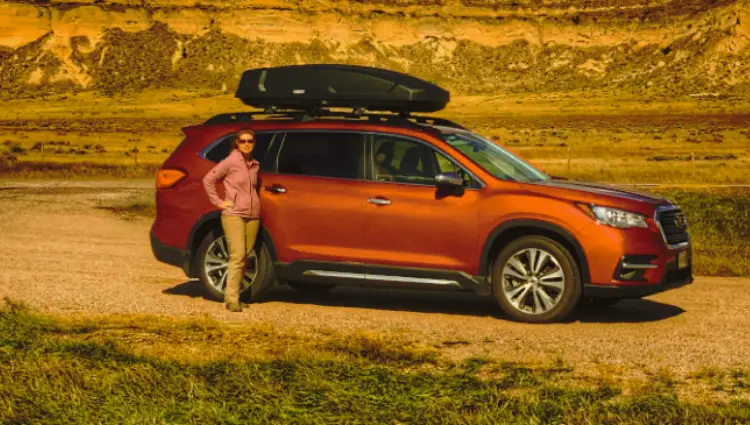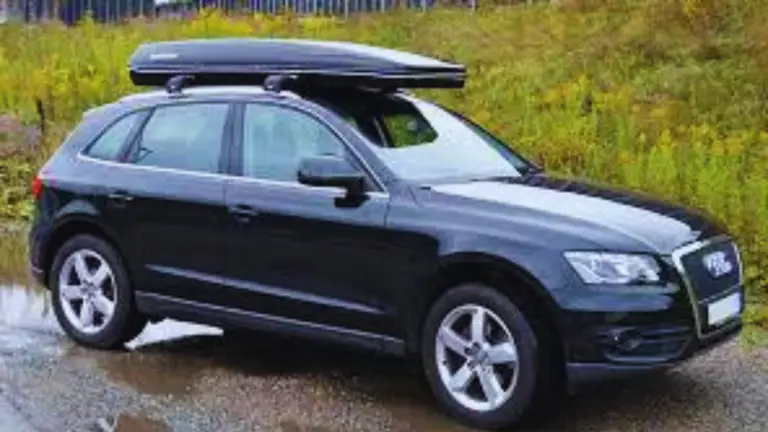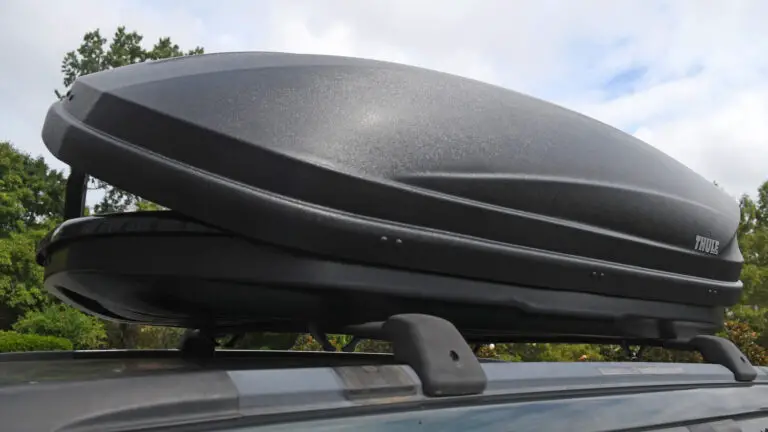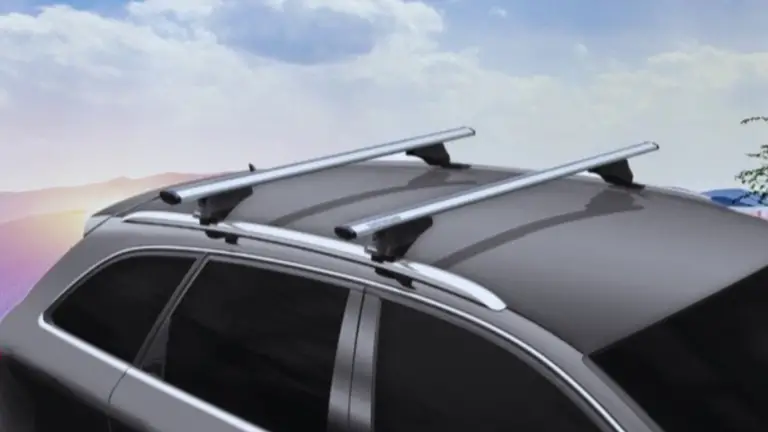How to stop roof rack vibration – The complete guide. Learn what causes roof rack vibration and how you can stop it for good.
If you’re a car owner who loves exploring the great outdoors or frequently embarks on road trips, you know how important it is to have enough storage space for all your gear. This is where roof racks come in handy, providing a practical solution for carrying extra luggage, bikes, kayaks, and other bulky items. However, roof rack vibration can be a nuisance, causing discomfort and potentially compromising safety.
In this comprehensive guide, we’ll delve into the various causes of roof rack vibration and provide practical solutions to help you eliminate it. Whether you’re a weekend adventurer or a seasoned traveler, this guide will equip you with the knowledge to enjoy a vibration-free journey and make the most out of your roof rack.
Why Roof Rack Vibration Occurs
Aerodynamics and airflow patterns around the vehicle primarily affect roof rack vibration. When the vehicle is in motion, the air currents interact with the roof rack, leading to vibrations. Several factors contribute to roof rack vibration, including the design of the roof rack, the quality of the mounting hardware, and the weight and distribution of the load. By understanding the underlying physics, you can address these factors and minimize roof rack vibration effectively.
Understanding the Impact of Roof Rack Vibration
Roof rack vibration is a common issue that can occur when driving at certain speeds, causing shaking or rattling noises that can be irritating and distracting to passengers. However, it’s important to understand that roof rack vibration can have a more significant impact than just discomfort.
For instance, excessive roof rack vibration can cause damage to your vehicle’s roof, as well as the items being carried on the roof rack. This can lead to costly repairs or replacement of the roof rack and its contents.
In addition, roof rack vibration can also compromise the stability of your vehicle, especially when driving at high speeds or in adverse weather conditions. This can affect your ability to control the car, increasing the risk of accidents or collisions.
Furthermore, roof rack vibration can also affect the fuel efficiency of your vehicle. The shaking and rattling can create additional drag, which can require your engine to work harder, leading to increased fuel consumption and reduced gas mileage.
Therefore, understanding the impact of roof rack vibration is essential in ensuring your safety and the safety of your passengers, as well as protecting your vehicle and its contents. In the following sections, we’ll explore the various causes of roof rack vibration and provide practical solutions to help you prevent it.
If you are in the market for the best roof rack check on amazon
Signs of Roof Rack Vibration
Detecting roof rack vibration is crucial for timely intervention. The signs can vary depending on the severity of the vibration and the type of roof rack installed. Visual cues include visible movement or shaking of the roof rack components, loose or misaligned parts, and unusual wear patterns. Audible indications may include rattling, buzzing, or whistling sounds. Additionally, changes in vehicle handling, such as increased steering wheel vibrations or a feeling of instability, can also signify roof rack vibration.
7 Steps to Prevent Roof Rack Vibration
Preventing roof rack vibration requires a systematic approach, encompassing various aspects of roof rack selection, installation, maintenance, and driving habits. By following these steps, you can significantly minimize roof rack vibration and enjoy a smooth and quiet ride.
1. Choosing the Right Roof Rack
Selecting the appropriate roof rack is the first step in preventing vibration issues. Consider the type of roof rack that suits your vehicle and the intended use. Opt for vibration-resistant models that are designed to minimize airflow disruption and turbulence. Look for features such as aerodynamic shapes, wind deflectors, and anti-vibration mechanisms.
2. Proper Installation
Correct installation is crucial to ensuring the stability and performance of the roof rack. Carefully read the manufacturer’s instructions and follow the step-by-step installation process. Properly align and balance the roof rack to distribute the load evenly. Double-check all connections and tighten the mounting hardware securely.
3. Using Quality Mounting Hardware
Using high-quality mounting hardware is essential for a secure and stable roof rack. Inferior or worn-out hardware can contribute to roof rack vibration. Choose hardware made of durable materials that can withstand constant vibrations and exposure to various weather conditions. Follow the manufacturer’s recommendations regarding the specifications and torque settings for the mounting hardware.
4. Securing the Load Correctly
Improperly secured cargo can increase the chances of roof rack vibration. Ensure that the load is evenly distributed and balanced on the roof rack. Use appropriate tie-down straps, ropes, or cargo nets to secure the items effectively. Consider using additional accessories, such as bungee cords or load adjusters, to provide extra stability and prevent shifting during travel.
5. Adding Dampening Material
Dampening materials can help reduce vibration by absorbing and dissipating energy. Apply these materials strategically to areas prone to vibration, such as the contact points between the roof rack and the vehicle’s roof. Common dampening materials include rubber strips, foam pads, or adhesive sound-deadening sheets. Follow the manufacturer’s instructions for proper application.
6. Regular Maintenance
Regular maintenance is essential to ensure the long-term performance of your roof rack and minimize the risk of vibration. Inspect the roof rack periodically for signs of wear, loose components, or damage. Clean the roof rack regularly and remove any debris or contaminants that can interfere with its stability. As the manufacturer advises, lubricate moving parts like hinges or sliding mechanisms.
7. Adjusting Driving Habits
Your driving habits can significantly influence roof rack vibration. Maintain a steady speed while driving to reduce the chances of airflow disturbances. Avoid sudden acceleration, deceleration, or abrupt maneuvers, as these can amplify vibrations. Take precautions while driving on rough roads or in adverse weather conditions, as these factors can exacerbate roof rack vibration.

How to Stop Roof Rack Vibration FAQs
Q. Can roof rack vibration damage my vehicle?
Roof rack vibration itself is unlikely to cause severe damage to your vehicle. However, prolonged exposure to vibration can lead to wear and tear on the roof rack components, potentially compromising its structural integrity. It is essential to address roof rack vibration promptly to avoid any potential safety hazards.
Q. How do I know if my roof rack is causing vibration?
Visual cues, such as movement or shaking of the roof rack components, misaligned parts, or unusual wear patterns, are indications of roof rack vibration. Audible signs, including rattling, buzzing, or whistling sounds, can also signify the presence of vibration. Changes in vehicle handling, such as increased steering wheel vibrations or instability, can further confirm roof rack vibration.
Q. Can I install a roof rack myself, or should I hire a professional?
Installing a roof rack yourself is possible, but it requires careful attention to detail and adherence to the manufacturer’s instructions. If you’re not confident in your abilities or if your vehicle requires complex installation procedures, it is advisable to seek professional assistance to ensure proper installation and minimize the risk of vibration issues.
Q. Will adding extra weight to my roof rack increase the chances of vibration?
Adding extra weight to your roof rack can potentially increase the likelihood of vibration, especially if the load is unbalanced or improperly secured. It is important to distribute the weight evenly and secure the cargo using appropriate tie-down methods. Following the manufacturer’s weight capacity guidelines is crucial to preventing excessive vibrations.
Q. Is there a specific speed range where roof rack vibration is more likely to occur?
Roof rack vibration can occur at various speeds, depending on factors such as the vehicle’s aerodynamics, wind conditions, and the design of the roof rack itself. However, it is commonly observed that vibrations tend to be more pronounced at higher speeds, typically above 50 miles per hour. Taking preventive measures, as outlined in this guide, can help minimize vibrations within a wide range of speeds.
Q. What should I do if I notice roof rack vibration while driving?
If you notice roof rack vibration while driving, it is recommended to pull over to a safe location and inspect the roof rack for any visible issues or loose components. Check the load for secure fastening and adjust if necessary. If the vibration persists, consider reducing your speed or removing the load temporarily until the issue can be addressed.
Q. Can I use my roof rack for different types of cargo without experiencing vibration?
Roof racks are versatile and can accommodate various types of cargo. However, certain items, such as large or bulky objects with irregular shapes, may be more prone to causing vibration. Ensure that the load is properly secured and distributed evenly to minimize the risk of vibration. Using additional tie-down straps or accessories, such as cargo bags or boxes, can provide added stability.
Q. Are there any alternative solutions for reducing roof rack vibration?
In addition to the preventive measures discussed, there are alternative solutions available to reduce roof rack vibration. These include installing aerodynamic accessories, such as wind deflectors or fairings, which can redirect airflow and minimize turbulence. However, it is important to note that the effectiveness of these solutions may vary depending on the specific vehicle and roof rack configuration.
Q. How often should I inspect my roof rack for signs of vibration?
Regular inspections are crucial to identify any signs of roof rack vibration. It is recommended to inspect your roof rack before embarking on long trips or at least once every few months, depending on your usage frequency. Additionally, inspect the roof rack if you notice any changes in vehicle handling or unusual noises during your regular driving.
Q. Can I prevent roof rack vibration by tightening the mounting hardware?
Tightening the mounting hardware is an important step in preventing roof rack vibration. However, it is equally essential to follow the manufacturer’s recommended torque specifications and avoid over-tightening, which can lead to damage or stress on the roof rack components. Proper alignment, balance, and the use of high-quality hardware are key factors in minimizing vibration.
Q. Will roof rack accessories, such as wind deflectors, help reduce vibration?
Yes, roof rack accessories like wind deflectors can contribute to reducing vibration. Wind deflectors are designed to redirect airflow and minimize turbulence around the roof rack, thereby reducing the chances of vibration. When selecting accessories, ensure compatibility with your specific roof rack model and follow the manufacturer’s installation instructions.
Q. Can I still use my roof rack if it vibrates occasionally?
Occasional roof rack vibration is not uncommon and may not pose significant risks. However, it is important to investigate the cause of the vibration and take appropriate measures to address it. Regularly monitor the vibration intensity and frequency. If the vibration becomes excessive or persistent, it is advisable to seek professional assistance or consult the roof rack manufacturer.
Q. Are there any specific regulations or guidelines for roof rack installations?
Regulations and guidelines for roof rack installations can vary depending on the region or country. It is recommended to familiarize yourself with the local laws and regulations regarding roof rack installations, load restrictions, and secure tie-down requirements. Additionally, consult the vehicle manufacturer’s guidelines and the roof rack manufacturer’s instructions for specific installation and usage guidelines.
Q. How do I choose the right roof rack for my vehicle?
Choosing the right roof rack for your vehicle involves considering factors such as the vehicle’s make and model, roof type, and intended usage. Consult the vehicle manufacturer’s guidelines or contact a reputable roof rack retailer for recommendations. Consider factors such as weight capacity, compatibility with accessories, and the ease of installation and removal.
Q. Is it necessary to remove the roof rack when not in use?
It is not always necessary to remove the roof rack when not in use. However, removing the roof rack when it is not needed can reduce wind resistance, improve fuel efficiency, and minimize the chances of vibration issues. If you rarely use the roof rack or anticipate a prolonged period without its usage, removing it can be a practical option.
How to Stop Roof Rack Vibration: Final Thoughts
Roof rack vibration can be a nuisance during your travels, but with the right knowledge and proactive steps, you can eliminate this issue and enjoy a smooth and vibration-free journey. By choosing the right roof rack, installing it correctly, securing the load properly, and considering maintenance and driving habits, you can minimize vibrations and ensure a safe and comfortable experience. Remember to regularly inspect your roof rack for signs of wear and address any issues promptly. With these preventive measures, you can confidently embark on your adventures without worrying about roof rack vibration.












